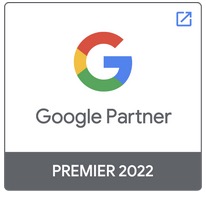Generative Engine Optimization (GEO) in the Age of Artificial Intelligence
The proliferation of large language models (LLMs) and the integration of generative capabilities directly into search engines have ushered in a new era in how users interact with online information. We’ve been trying to understand the behavioral patterns of Generation Z for quite some time now—yes, I know I’m digressing, but it’s all connected. Gen Z moves to the rhythm of the patterns GEO aims to address: quick answers, no clicks, just give me the information. This paradigm shift calls for a reevaluation of traditional search engine optimization (SEO) strategies, paving the way for an emerging discipline: Generative Engine Optimization (GEO).
As digital marketing professionals, understanding and effectively implementing Generative Engine Optimization principles has become imperative to ensure visibility, credibility, and reach in this rapidly evolving digital landscape. Not all of our digital marketing agency clients are ready to grasp the force with which this new paradigm is breaking through.
GEO goes beyond optimizing for ranking in organic search results (SERPs); it focuses on influencing how generative AI engines select, interpret, and synthesize information. The new customer journey introduces new user behavior patterns in search, and we must adapt. Companies need to be where their customers are looking, and agencies must lead the change.
How searches are evolving
The difference between traditional and generative search lies in how information is presented to users. While conventional search engines provide a hierarchical list of links, generative engines (powered by Generative Engine Optimization) deliver direct and contextually relevant answers based on the analysis and synthesis of large volumes of published content, not only from blogs but also from podcasts, social media, and, of course, video platforms. This metamorphosis has significant implications for optimization strategies. We’re facing the semantic-based SEO we’ve long talked about it’s finally arrived, and it’s here to stay.
Although SERP positioning remains relevant, its importance may diminish if AI‑generated answers fully satisfy user intent. The need to explore traditional organic results will decrease along with website traffic. Personally, I’m not concerned about this; I prefer fewer, high-quality visits over quantity, visits that last and drive interaction. GEO aims to position content so that it is seen as a reliable, authoritative source for generating these AI driven answers.
At the core of GEO: AI comprehension and referencing
Generative Engine Optimization focuses on adapting digital content, so it is inherently understandable, authoritative, and easily paraphrased by generative AI algorithms. This requires a deep understanding of how LLMs work, the criteria they use to assess content quality and relevance, and the strategies to align our content accordingly. Of course, user behavior is also crucial—despite privacy constraints, our devices “listen”, and we leave behind trails in our browsings and every click, scroll, or even view duration.
For example, if the average view duration of a TikTok video is 3 seconds, that means by spending 5 seconds on it your timeline will soon be flooded with similar content. So yes, those 2 extra seconds matter. That’s how algorithms are trained to identify relevant content for each user.
The effectiveness of GEO is measured by how likely our content is to be cited, summarized, and used as the basis for AI-generated answers. Unlike traditional SEO, which focuses on algorithmic ranking signals, GEO emphasizes semantic optimization, topical authority, and structural clarity to enable AI interpretation.

The foundations of GEO: quality, authority and clarity
An effective GEO strategy is built on three interconnected pillars: intrinsic content quality, demonstration of topical authority, and structural clarity for AI interpretation.
- Content quality involves factual accuracy, thoroughness in addressing user intent, and the lack of grammatical or stylistic errors.
- Topical authority is earned through consistent expert content creation, acquiring backlinks from relevant sources, and demonstrating deep niche knowledge.
- Structural clarity aids AI processing through proper use of headers, lists, tables, and concise language.
GEO demands a holistic approach that integrates these three pillars into every content creation and optimization effort.
Advanced query research for GEO
GEO-oriented query research goes far beyond identifying traditional keywords. At our agency, we’ve been working on user search prediction, studying behaviors, and running hundreds of tests. Advanced research involves understanding full questions, conversational phrasing, and the underlying user intent expressed when interacting with generative search engines.
This means analyzing conversational search trends, identifying FAQs in our niche, and anticipating how AI might interpret and respond to these queries. GEO thrives on a granular understanding of user intent in the generative context, allowing us to create content that accurately and thoroughly meets informational needs.
Creating comprehensive and authoritative content
The foundation of a successful GEO strategy lies in producing comprehensive, accurate content backed by strong authority. Our goal should be to create the best possible resource to answer our audience’s questions, offering detailed information, relevant data, real examples, and expert insight. Shallow or incomplete content is less likely to be seen as valuable by generative AI engines.
GEO demands a commitment to excellence in content creation, prioritizing depth, accuracy, and relevance over keyword optimization. Every piece of content should be designed to address at least three potential user queries.
Semantic and contextual optimization for AI interpretation
GEO requires optimization that goes beyond simple keyword matching. We must enrich our content with a semantic web of related terms and concepts that help AI understand the context and relevance of our information across a broader spectrum of queries. This means using synonyms, related terms, named entities, and language that reflects the topic’s complexity and nuances.
Semantic optimization enhances AI interpretation, increasing the likelihood of being deemed relevant for various generative queries. GEO is rooted in creating a semantically rich, interconnected content ecosystem.
Structure and format for AI accessibility: enabling efficient parsing
Content structure and how it is presented are critical to GEO effectiveness. Well‑organized content with clear headers (H1, H2, H3), lists (ordered and unordered), tables, charts, and other visual elements helps AI algorithms process and understand the material.
These elements allow AI to quickly identify relevant sections and extract key information to construct generative responses. GEO involves creating content that is not only readable for humans but also easily parsable and interpretable by AI systems.
Building authority and trust in the generative AI era
Establishing authority and trust remains essential in GEO. Acquiring backlinks from reputable, relevant sites signals credibility to search engines, including those with generative capabilities. Being cited as an expert source and participating in conversations within your niche also helps build a reputation that can influence AI source selection.
GEO benefits from strong link-building strategies and cultivating an online reputation as a thought leader in your field.
Continuous content updates for generative relevance
In the fast-paced world of online information, continuously updating and maintaining content is critical for GEO. Especially for rapidly evolving topics: outdated or inaccurate information is less likely to be used by generative AI engines.
Regularly reviewing and updating your content to reflect the latest information is essential to GEO. Keeping content fresh and relevant ensures it remains a valuable resource for users and, in turn, for AI.
Smart “zero-click” optimization in the GEO context
While GEO’s main goal isn’t necessarily to maximize direct clicks from AI-generated responses, we should still optimize content so key information is easily extractable and understandable. This increases the chances that AI will use extracts of our content in its responses, even if the user never clicks through to our website.
This “smart zero-click” concept, where valuable information is disseminated via AI responses, remains a powerful way to boost brand visibility and credibility. We must explain to clients that zero clicks is not a bad outcome. In fact, our authority is at stake.
Monitoring and analyzing visibility in generative AI environments
GEO calls for new metrics and tools to monitor and analyze our visibility in generative AI environments. We need to track how and where our brand and content are mentioned in AI-generated responses, identify which queries trigger those mentions, and assess the impact of this visibility on brand awareness and perception.
Analyzing AI visibility allows us to refine our strategies and continuously optimize our content.
The convergence of traditional SEO and Generative Engine Optimization
It is crucial to understand that GEO does not replace traditional SEO, it complements and expands upon it. The technical foundations of SEO, such as page speed optimization, mobile responsiveness, and website structure remain essential to ensure content is traceable and indexable by all search engines—including generative ones.
High-quality content creation and domain authority building—backbones of SEO—are just as vital for GEO. The convergence of these two disciplines represents the future of online visibility.
The future of digital marketing: SEO and GEO in a unified strategy
GEO isn’t a substitute for traditional SEO but rather an evolution and extension of its core principles. Technical SEO (page speed, mobile optimization, site structure…) will remain key to ensuring content is discovered and indexed by search engines, generative or otherwise.
But GEO introduces a new layer of complexity and opportunity. It demands a deeper understanding of how AI works, what criteria it uses to evaluate content, and how we can tailor it to meet those criteria.
In the future of digital marketing, we’re likely to see increasing convergence between SEO and GEO, with strategies designed to optimize for both traditional ranking algorithms and generative AI’s interpretive and synthetic capabilities.
Marketers who embrace this new reality and develop a deep understanding of GEO will be better positioned to thrive in the age of artificial intelligence. The key lies in adaptability, experimentation, and a commitment to creating authoritative, valuable content that resonates with both human users and the AI systems transforming how we interact with information online.
Adaptability and experimentation: keys to success in GEO
The generative AI landscape is constantly evolving, with new models and features emerging on a regular basis. Therefore, adaptability and experimentation are essential for success in Generative Engine Optimization. We must be willing to test different approaches in content creation and optimization, analyze the results, and adjust our strategies based on what works best in this new environment.
Staying up to date with the latest trends and developments in the generative AI field is crucial to maintaining a competitive edge in Generative Engine Optimization.
The future of digital visibility: mastering Generative Engine Optimization
Generative Engine Optimization represents the new frontier of digital visibility. Marketing professionals who understand its core principles and develop effective strategies to optimize content for the age of generative AI will be better positioned to reach and connect with their audiences in this rapidly evolving landscape.
The key to success in Generative Engine Optimization lies in a content-first approach—creating valuable, authoritative, and well-structured content that resonates with both human users and the artificial intelligences reshaping how online information is discovered and consumed. GEO is the compass that will guide brands through this new era of search. Before us, lies a magnificent opportunity, an open horizon of possibilities whose limits I dare not define. If someone once claimed SEO was dead, long live GEO.







Be Social